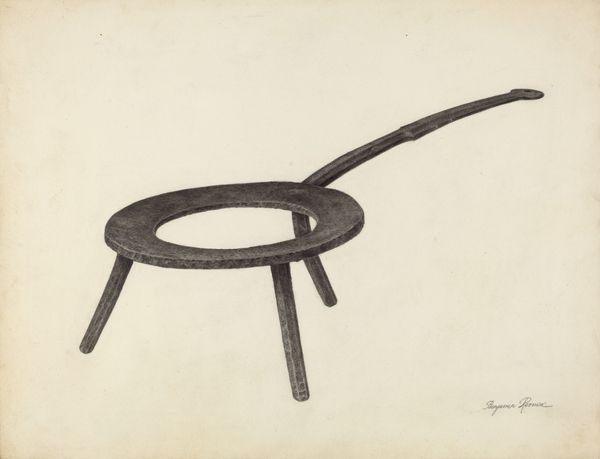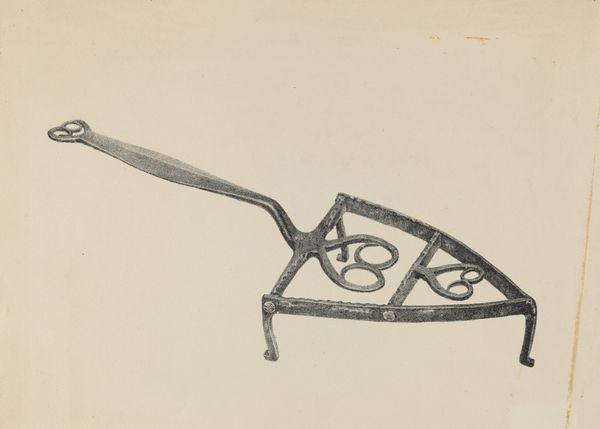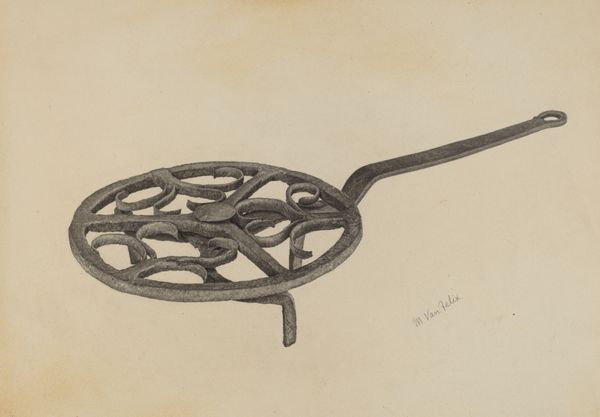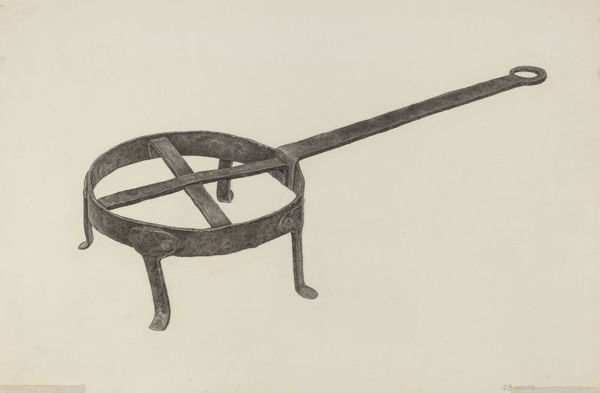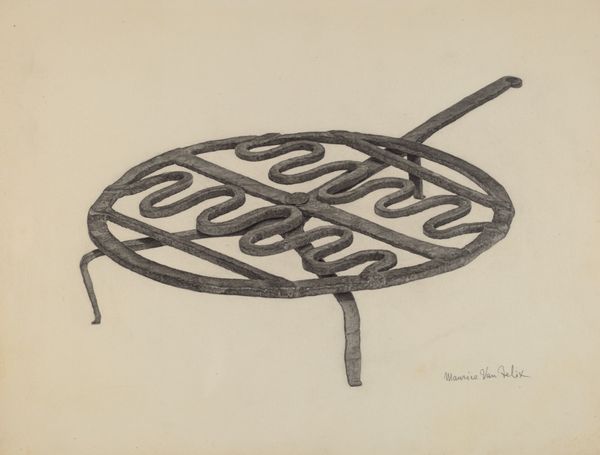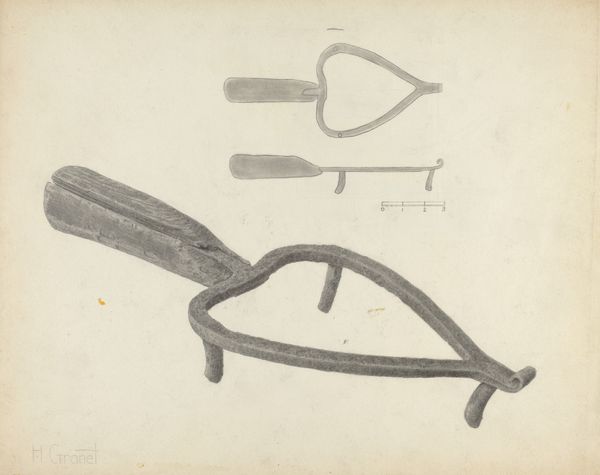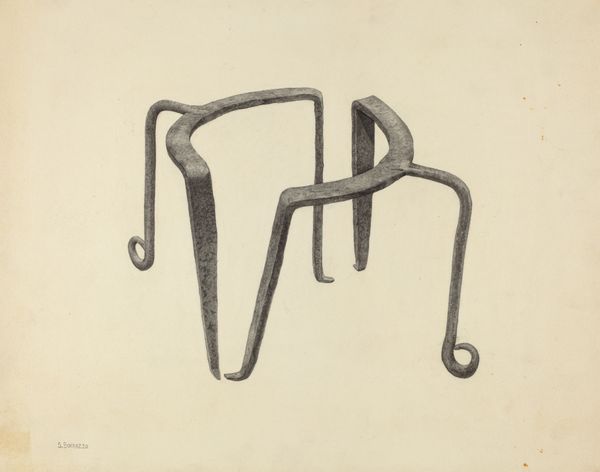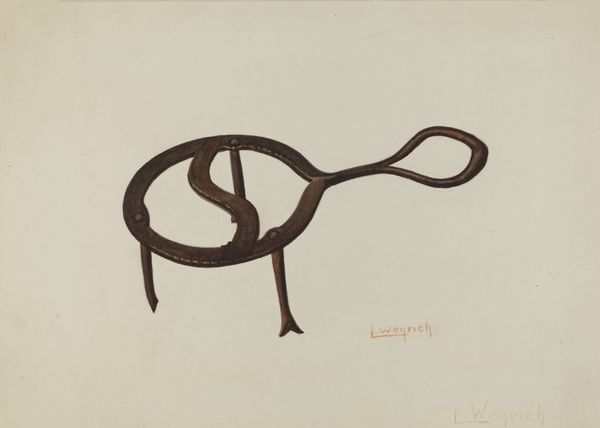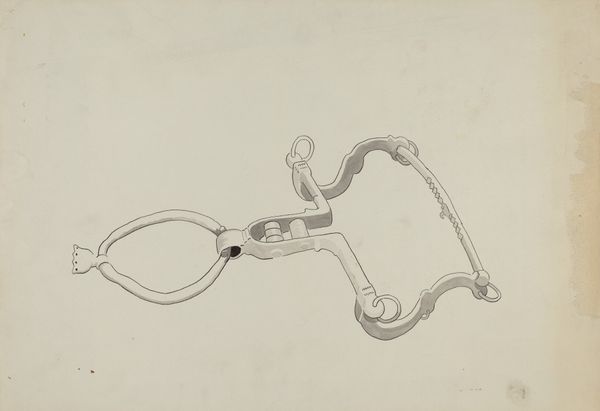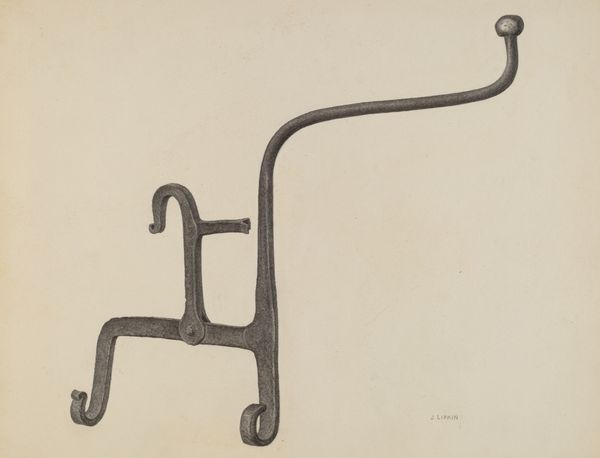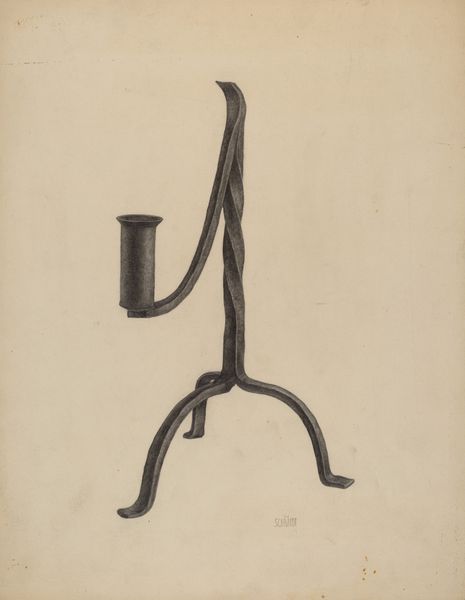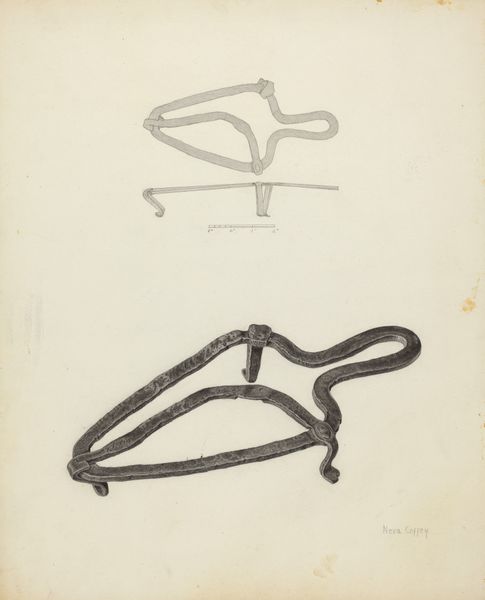
drawing, paper, watercolor, pencil
#
drawing
#
water colours
#
paper
#
watercolor
#
pencil
#
watercolor
Dimensions: overall: 30.7 x 40.2 cm (12 1/16 x 15 13/16 in.) Original IAD Object: 6 1/2" in diameter; 2 3/4" high
Copyright: National Gallery of Art: CC0 1.0
Editor: We’re looking at Mildred Ford's "Trivet," created around 1939 using watercolor, pencil, and paper. It’s a straightforward depiction, but something about the muted tones gives it a melancholy feel. What do you see in it? Curator: Note the careful attention to line and form. Ford delineates the object with a precision that verges on technical drawing, yet softens the edges through subtle watercolor washes. The interplay between the rigid structure of the trivet and the delicate rendering of light and shadow is key. Editor: So, it’s less about what it is and more about how she represents it? Curator: Precisely. Consider how the composition guides the eye. The central void, defined by the trivet's ring, creates a negative space that is as important as the object itself. The converging lines of the legs direct our gaze inwards, focusing our attention on this emptiness. Editor: I hadn’t considered the negative space like that. Curator: And observe the restrained palette. Ford’s limited range of greys and browns serves to emphasize texture and surface detail. The roughness of the metal is contrasted with the smooth, flat surface of the paper, creating a tactile quality despite the two-dimensionality of the medium. The absence of vibrant color compels us to scrutinize the tonal variations, heightening our awareness of form. Editor: It really makes you appreciate the subtle details. I came in thinking it was just a simple drawing of an object. Curator: It is in Ford’s emphasis on form and materiality that we find its artistic value. And perhaps in this way, it asks what our definitions of "art" or "artifact" even mean.
Comments
No comments
Be the first to comment and join the conversation on the ultimate creative platform.
